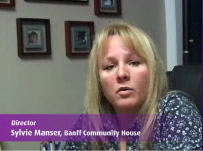









Keeping people safe & well
|
Steps in Implmenting Various Phases of NCLB
Organizing the Steering Committee
Step 1: Meeting stakeholders for gaining commitment
Step 2: Creating a core group for providing leadership
 "I have had the pleasure to see first hand the impact the No Community Left Behind Project has made to this community. It has made an enormous impact on making a stronger community. The community neighbours are now taking back their neighbourhood. They are responding to issues. They are addressing issues. And most importantly they are discussing issues…Another area of success is how all the partners come together to support this initiative. Through the key partnerships, they are addressing problems in all areas, specifically mobilizing the parents. .. Partnerships and community mobilization has made this project a success."
"I have had the pleasure to see first hand the impact the No Community Left Behind Project has made to this community. It has made an enormous impact on making a stronger community. The community neighbours are now taking back their neighbourhood. They are responding to issues. They are addressing issues. And most importantly they are discussing issues…Another area of success is how all the partners come together to support this initiative. Through the key partnerships, they are addressing problems in all areas, specifically mobilizing the parents. .. Partnerships and community mobilization has made this project a success."— Sylvie Manser,
Direct, Banff Community House
Step 3: Ensuring stakeholders’ commitment
Step 4: Developing ToRs and determining the roles and responsibilities
Step 5: Developing the decision making processes
Step 6: Creating an organizational structure for implementation
Neighborhood AssessmentStep 1: Assembling the assessment team
Step 2: Identifying sources and type of information
Step 3: Conducting community safety survey and
Step 4: Developing a crime and asset inventory
Step 5: Identifying resources and areas for intervention
Step 6: Resources inventory
Planning No Community Left Behind initiativeStep 1: Putting together a planning team with representation from all stakeholders
Step 2: Identifying resources for planning
Step 3: Preparing to plan
Step 4: Moving from community needs to critical priorities
Step 5: Linking critical priorities to goals and objectives
Step 6: Developing the implementation plan
Step 7: Designing a planning format for the local strategy
Step 8: Sharing the final action plan with steering committee for approval
Implementation ProcessStep 1: Establishing an organizational structure
Step 2: Developing subcommittees’ action plan where needed
Step 4: Establishing a consistent procedure staff and volunteers
Step 5: Developing a process for steering committee and subcommittee meetings
Step 6: Developing a process for team building
Step 7: Providing training and technical assistance to staff and community members
Community MobilizationStep 1: Identifying activities that will mobilize the community.
Step 2: Securing residents’ commitment and involvement
Step 3: Encouraging community members to help provide community focus
Step 4: Building community networks
Step 5: Creating resident-led leadership structures
Step 6: Leveraging internal and external resources
Step 7: Creating additional communication vehicles between the community and the police and other partners at different levels of age groups such as Youth and parents.
Law EnforcementStep1: Establishing strong relationship with the police services and ensure their full commitment and participation.
Step 2: Reviewing the needs assessment to identify law enforcement issues of greatest priority
Step 3: Establishing law enforcement goals, objectives and tasks after a proper community safety audit by the police services
Step 4: Establishing communication channels between the community and police services for trust building.
Step 5: Developing an implementation plan for the law enforcement strategy
Community PolicingStep 1: Creating a community policing-neighborhood partnership as one of the ultimate objectives.
Step 2: Taking time to determining neighborhood characteristics before going into establishing neighborhood watches
Step 3: Developing an information and communication network before formally launching neighborhood watch.
Step 4: Assessing community fear and develop ways to address the fear that restrict community from participation in community policing.
Step 5: Developing an Implementation Plan
Step 6: Collaborating on Problem Solving
Step 7: Monitoring and Assessing Success
Prevention and EmpowermentStep 1: Establishing a prevention, intervention and empowerment subcommittee of the steering committee to look into the empowerment needs.
Step 2: Reviewing the needs assessment and develop an action plan
Step 3: Developing plans for undertaking preventive activities for youth.
Neighborhood RestorationStep 1: Creating a subcommittee for neighborhood restoration
Step 2: Revisiting the needs assessment conducted for the neighborhood
Step 3: Formulating goals and objectives to be accomplished
Step 4: Developing activities to achieve goals and objectives
Step 5: Securing approval from the steering committee
Step 6: Adjusting the goals, objectives or activities
Step 7: Evaluating the neighborhood restoration plan
EvaluationStep 1: Determining as to how the project will be evaluated
Step 2: Determining source/method to be used for gathering information
Step 3: Setting objectives for evaluation
Step 4: Identifying outcomes, indicators, source of information, tools and frequency of information collection.











©
2005-15 South - East Ottawa Community Health Centre
Centre de Sante Communautaire du Sud Est D'Ottawa
Contact: Abid Jan Tel./ Tél: (613) 737-5115 Ext. 2403 Fax/Télé: (613) 739-8199
NCLB matters because neighbourhoods matter

